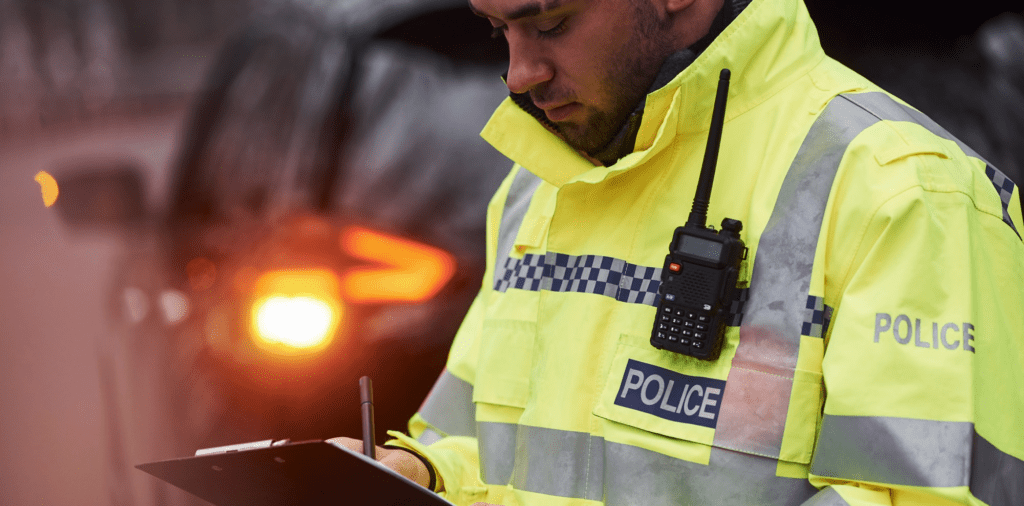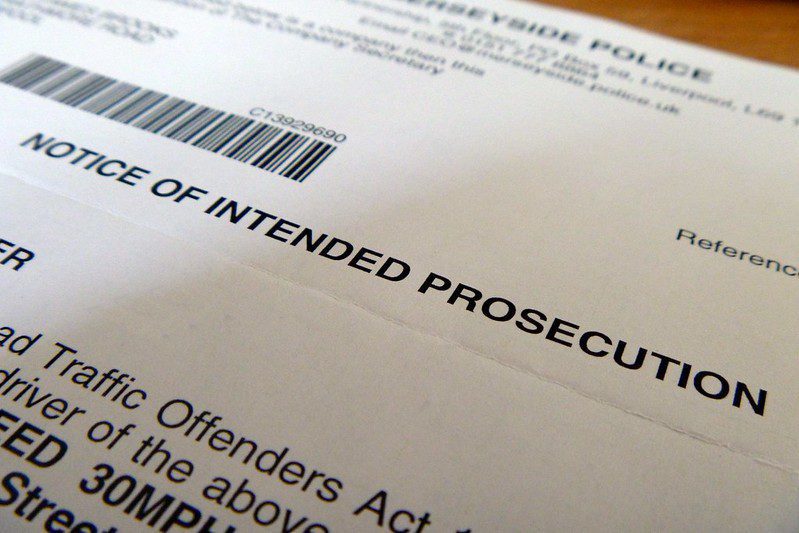
Whether you have a pristine driving history or a couple of penalties under your belt, all drivers are aware that accruing points on their licence is not ideal. Nonetheless, there might be several aspects of the points system that remain unclear to you.
- What are penalty points?
- What are penalty points given for?
- How many penalty points does it take to get disqualified from driving?
- How can I avoid getting penalty points on my licence?
- Frequently asked questions
Hence, we’re here to provide a comprehensive overview of penalty points. From understanding the reasons that lead to receiving them to knowing when and how they can be removed, we’ve got it all covered for you.
What are penalty points?
Penalty points are a system used in the UK to hold drivers accountable for their on-road actions. When a driver is found guilty of a motoring offence, the courts have the authority to endorse their driving licence with penalty points. These points serve as a record of the offence on the individual’s driving history.
Different offences come with varying numbers of points. Some offences have a fixed number of points associated with them. For instance, not heeding a ‘stop’ sign typically results in a 3-point penalty.

Image source: Pete
On the other hand, some offences grant judges discretion in determining the number of points to be assigned, based on the severity of the offence. A classic example is dangerous driving; depending on its severity and the circumstances, a judge can award anywhere between 3 to 11 points.
Before the introduction of the penalty points system, courts had limited options for punishing motorists, primarily through fines or driving bans. The introduction of this system was aimed at closely monitoring drivers who repeatedly break traffic rules. The underlying idea is to deter bad driving habits and promote safer roads.
Furthermore, the penalty points system has led to the implementation of the ‘totting-up’ procedure. This approach ensures that drivers accumulating a specific number of points over a set period, typically 12 points within three years, face additional sanctions. This could range from driving bans to mandatory retraining, thereby ensuring that habitual offenders face more stringent consequences for their actions.
What are penalty points given for?
Penalty points on a driving licence serve as a record of a motorist’s offences, and different codes represent different types of offences.

Group | Codes | Example |
Accident offences | AC | Failing to stop after an accident. |
Careless driving | CD | Driving without due care and attention. |
Construction and use offences | CU | Using a vehicle with defective steering. |
Disqualified driver | BA | Driving while disqualified by order of court. |
Drink | DR | In charge of a vehicle while unfit through drink. |
Drugs | DG | In charge of a vehicle when unfit through drugs. |
Insurance offences | IN | Using a vehicle uninsured against third party risks. |
Licence offences | LC | Driving otherwise than in accordance with a licence. |
Miscellaneous offences | MS | Refusing to submit to an eyesight test. |
Motorway offences | MW | Contravention of special roads regulations. |
Pedestrian crossings | PC | Contravention of pedestrian crossing regulations with moving vehicle. |
Reckless/dangerous driving | DD | Causing death by dangerous driving. |
Speed limits | SP | Exceeding statutory speed limit on a public road. |
Theft or unauthorised taking | UT | Aggravated taking of a vehicle. |
Traffic direction or signs | TS | Failing to comply with double white lines. |
TT99 Code
If you’ve accumulated enough penalty points to be disqualified from driving under the ‘totting-up’ system, you will see the TT99 code on your driving record. While this code serves to nullify the points that led to your disqualification, it still carries a weight of 4 points. It stands as a record of your disqualification due to accumulating excessive points.
Mutual Recognition – MR Codes
For drivers who face disqualification in Northern Ireland or the Isle of Man, this will also have consequences on their Great Britain (GB) licence. An MR code (starting with “MR”) gets added to the driving record, indicating that the disqualification originates from another jurisdiction but is recognised in GB.
Offences by Association
Not all penalty points arise from offences you commit directly behind the wheel. There are certain codes that are attributed to individuals who play a role in encouraging or allowing others to commit driving offences. These include:
- Aiding, abetting, counselling, or procuring offences
- Causing or permitting offences
- Inciting offences
The codes for these offences modify the base code of the actual offence. For instance, if you were found guilty of inciting someone to drive under the influence of alcohol, your licence would be endorsed with the code DR16. In contrast, the individual who actually drove the vehicle whilst over the permitted alcohol limit would get the code DR10.
Understanding these codes and their implications is crucial for every driver. They not only influence insurance premiums but also stand as a testament to one’s responsibility and conduct on the road.
How many penalty points does it take to get disqualified from driving?
In the UK, the ‘totting-up’ system is used to monitor and penalise drivers who repeatedly break traffic rules. Here’s a breakdown of how this system works:
- If you accumulate 12 or more penalty points within a 3-year period, you’ll typically face a driving ban lasting 6 months.
- A second disqualification within the same 3-year span usually results in a driving ban of 12 months.
- A third disqualification within 3 years typically results in a ban that lasts for 2 years.
While these are general guidelines, it’s important to remember that courts hold the authority to decide the duration of the ban based on the severity of the offence and any mitigating circumstances. In certain grave instances, like drink or drug driving, the court might impose a driving disqualification even if you have fewer than 12 points on your licence.

Additionally, should you face a disqualification lasting 56 days or more, not only will you need to apply for a new driving licence, but there’s also a possibility that you’ll have to retake your driving test. In some cases, the courts might mandate an extended driving test to ensure you’re fit to be on the road.
What are the rules for new drivers?
Drivers who have recently passed their driving test are held to a higher standard, courtesy of the New Drivers Act 1995. Here’s what new drivers should be aware of:
- If you accumulate six or more penalty points within the first two years of passing your test, your licence will be revoked.
This revocation differs from a disqualification. Essentially, a revocation means you’ll be stripped of your driving rights and will have to start the entire licensing process anew. This involves applying for a provisional licence, then going through the process of passing the theory and practical tests once again.
This stringent measure aims to emphasise the importance of responsible driving habits from the very beginning of one’s driving journey.
How can I avoid getting penalty points on my licence?
To safeguard your driving record, understanding how to avert accruing penalty points is pivotal. Many offences come with a predetermined number or range of penalty points, making it challenging to bypass them once convicted. Although appealing against a conviction is an option, success in these appeals can be elusive.

A noteworthy route to potentially avoid these points, particularly for speeding offences, is by undertaking a speed awareness course. However, this avenue comes with specific prerequisites:
- Admission: You must acknowledge that you were the driver during the offence.
- Clean recent history: You shouldn’t have any speeding convictions from the past 3 years.
- Course attendance: You shouldn’t have participated in another speed awareness course within the preceding 3 years.
- Speeding margins: The speed you were travelling at should fall within certain thresholds:
- Lower limit: Exceeding the speed limit by 10% + 2 mph (for instance, driving at 35 mph in a 30 mph zone).
- Upper limit: Surpassing the speed limit by 10% + 9 mph (like going at 42 mph in a 30 mph zone).
However, even with these conditions met, an invitation to a speed awareness course isn’t always assured. Variations exist among police forces regarding their criteria, and some might not offer these courses at all.
In the grand scheme of things, the most foolproof strategy to avoid getting points on your licence is rather straightforward: avoid committing offences. It’s always prudent to rectify any poor driving habits before they escalate into significant infractions. Driving responsibly is not only beneficial for maintaining a clean licence but also ensures safer roads for everyone.
Frequently asked questions
No, they don’t. In the past, penalty points were displayed on the paper counterpart driving licence, which had a distinct section for endorsements. However, this system underwent a change in Great Britain in 2015, leading to the discontinuation of the paper counterpart.
Currently, the details about an individual’s driving record, including any penalty points, are accessible online. These points no longer feature on the photocard licence itself.
It’s essential to highlight that this change is specific to Great Britain. In Northern Ireland, the paper counterpart remains an integral component of the driving licence. As a result, any acquired points will continue to be shown on this counterpart.
To find out the number of penalty points you have, the most straightforward method is by accessing your driving licence record online. Ensure you have the following details ready for the process:
- Your licence number
- Your National Insurance number
- The postcode listed on your driving licence
Another option is to use the GOV.UK Verify service. If you’d prefer a more direct approach, you can ring the dedicated helpline at 0300 083 0013. Should you want to obtain this information through post, send your request to:
DACT Team
DVLA
Swansea
SA99 1AJ
For those residing in Northern Ireland, the procedure isn’t the same. You’ll need to get in touch with the Driver & Vehicle Agency to retrieve this information.
Yes, there’s a strong probability it will. Insurance providers typically view drivers with past offences as higher risk. As a result, if you’ve accrued penalty points on your licence, you might see an increase in your insurance premiums.
The extent of this hike depends on several factors: the number of points, the type of offence(s) committed, and the policy of your insurance provider.
To give you a clearer picture, the charity IAM RoadSmart conducted a study that determined the average percentage rise in insurance premiums based on the number of penalty points. Their findings are as follows:
- 1–3 points: Premiums increased by 5.1%
- 4–6 points: Premiums surged by 25.8%
- 7–9 points: Premiums jumped by 45.0%
- 10–11 points: Premiums rose dramatically by 81.8%
- 12 or more points: Premiums escalated by a hefty 89.3%
Bear in mind, that these are approximate figures and can differ based on individual circumstances and insurance providers.
Yes. When you’re signing up for a new insurance policy, companies will typically ask about any prior driving convictions. If you’re with an existing provider, they might request immediate notification of any new convictions or inquire about them at the time of renewal.
However, this practice varies across providers, so it’s essential to familiarise yourself with their specific terms and conditions.
Avoid withholding information or providing false details about convictions, as this could backfire. If your insurance company discovers the discrepancy, they might not honour any claims in the wake of an accident.
Worse, this dishonesty could nullify your insurance entirely, potentially leading to additional legal issues if you’re caught driving uninsured.
One thing to keep in mind is the concept of spent convictions. Generally, there’s no obligation to disclose these to your insurer. Unnecessarily reporting them could inadvertently raise your insurance premiums. Always stay informed and honest to ensure you’re appropriately covered.
The courts are responsible for issuing penalty points, and they do so alongside endorsements.
Depending on the nature of the offence, judges have the discretion to allocate points within a defined range.
For instance, for offences like driving without due care and attention, judges might award anything between 3 to 9 points, based on the severity of the incident.
Yes, if you initially entered a ‘not guilty’ plea, you have the option to appeal against your conviction.
However, it’s typically recommended to pursue an appeal only if you possess fresh evidence or compelling arguments that were not presented in the initial hearing.
Yes, getting points on your licence signifies that you’ve been involved in a motoring offence.
These offences are typically prosecuted and adjudicated in magistrates’ courts and Crown Courts. Therefore, they are indeed classified as criminal convictions.
Yes, learner drivers can receive penalty points just like fully licensed drivers. Any points accumulated on a provisional licence will be carried over to the full licence, provided they remain valid.
It’s worth noting that learners can even be disqualified if they amass 12 points on their provisional licence—even before obtaining a full licence!
While the rules tailored for new drivers don’t pertain to provisional licence holders, it’s essential to be aware that getting 6 points within 2 years won’t lead to licence revocation for learners. This allows them to proceed with their driving test and secure a full licence.
But a word of caution: if you accumulate points on your provisional licence prior to passing the test, any additional points post-passing that bring your total to 6 or more could result in your full licence being revoked.
For instance, if you garnered 3 points while learning and then 3 more after passing, you’d face revocation. Accumulating 6 points during your learner phase means just a single additional point post-passing could cost you your licence!
Yes. It’s quite standard for courts to issue both a fine and penalty points simultaneously for a motoring offence.
To illustrate, being caught speeding typically results in a £100 fine along with 3 points added to your licence.
Not quite. An endorsement on your driving licence is essentially a record of an offence you’ve been convicted of. This is represented by a specific endorsement code added to your driving record. For instance, the offence of exceeding the speed limit on a public road has the code SP30.
Conversely, penalty points are linked to these endorsement codes. While some codes have a fixed number of points—like the TS10 code for failing to obey traffic lights, which carries a 3-point penalty—others offer a range, allowing judges to decide based on the offence’s gravity. For instance, the DR10 code for driving above the alcohol limit can result in between 3 to 11 points.
So, while endorsements represent the actual offence or conviction, penalty points specifically impact your driving record. That said, since they’re interconnected and remain on your licence for an equivalent duration, it’s not unusual for the terms to be used synonymously.
There is some nuance when it comes to how endorsements are treated within the legal framework versus how they reflect on your driving record.
While endorsements remain on your driving record for either 4 or 11 years, depending on the severity of the offence, the legal implications differ.
If you’re in a situation where you need to disclose criminal convictions to an employer—for instance, during a CRB check—the endorsement must be declared for 5 years post-offence.
Once this 5-year period lapses, the conviction is termed as ‘spent‘, meaning there’s no obligation to disclose it.
This can be perplexing. For instance, an endorsement for speeding will be visible on your driving record for 4 years, but you’d be obligated to declare it for 5 years if asked about criminal convictions.
On the other hand, graver offences, like causing death while driving under drug influence, linger on your driving record for 11 years, but again, the declaration requirement stands at 5 years.
While the typical protocol under the ‘totting-up’ system is to disqualify drivers who accumulate 12 or more points, there are exceptions.
Courts might choose to permit a driver to continue driving if they determine that a ban would result in ‘exceptional hardship’ for the individual. Such hardships might encompass scenarios like jeopardising someone’s employment.
Nevertheless, this practice is contentious. Many road safety advocates argue in favour of automatic bans for drivers once they reach the 12-point threshold.


